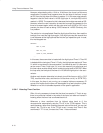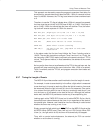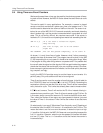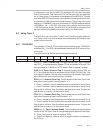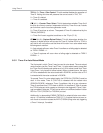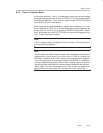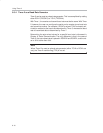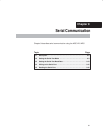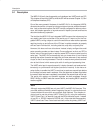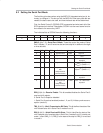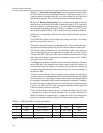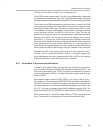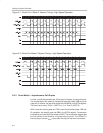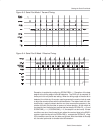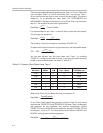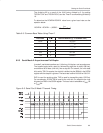
Description
9-2
9.1 Description
The MSC1210 family has three serial port interfaces: two UARTs and one SPI.
This chapter will cover the UARTs, while the SPI will be covered Chapter 13, Seri-
al Peripheral Interface (SPI).
One of the many powerful features of the MSC1210 is its integrated UARTs,
otherwise known as universal synchronous/asynchronous receiver/transmit-
ters. Just as the name implies, the UART can be configured for either synchro-
nous, half-duplex operation or asynchronous full-duplex (transmit and receive
data simultaneously) operation.
The fact that the MSC1210 has integrated UARTs means that values may be
very easily read from and written to the serial port. If it were not for the inte-
grated UARTs, writing a byte to a serial line would be a rather tedious process
requiring turning on and off one of the I/O lines in rapid succession to properly
shift out each individual bit, including start bits, stop bits, and parity bits.
However, this does not have to be done. Instead, simply configure the serial
ports operating modes and baud rates. Once configured, write to an SFR to
write a value to the serial port or read the same SFR to read a value from the
serial port. The MSC1210 automatically lets you know when it has finished
sending the written character and also lets you know whenever it has received
a byte, so that it can be processed. There is no need to worry about transmis-
sion at the bit level, which saves quite a bit of coding and processing time.
The UART serial port is asynchronous full−duplex (transmit and receive simul-
taneously) or synchronous half-duplex (transmit or receive). It also has a re-
ceiver buffer, to enable the UART to continue to receive a second byte before
the first byte has been read in software. If the first byte has not been read when
the second byte has been completely transmitted, the second byte will be lost.
The serial port receive and transmit registers are both accessed through
SBUF. Writing to SBUF loads the transmit buffer, and reading SBUF reads the
receive register.
Note:
Although a standard 8052 has only one UART, the MSC1210 has two. This
provides additional flexibility when integrating the part in a device that must
communicate with more than one external serial devices. This chapter ex-
plains how to use the primary UART (Serial Port 0); using the secondary
UART (Serial Port 1) is identical. Just use the SFRs that refer to port 1 instead
of port 0 (i.e., SCON1 instead of SCON0, etc.). Also note that the secondary
UART cannot use Timer 2 as a baud rate clock, while the primary UART can.



